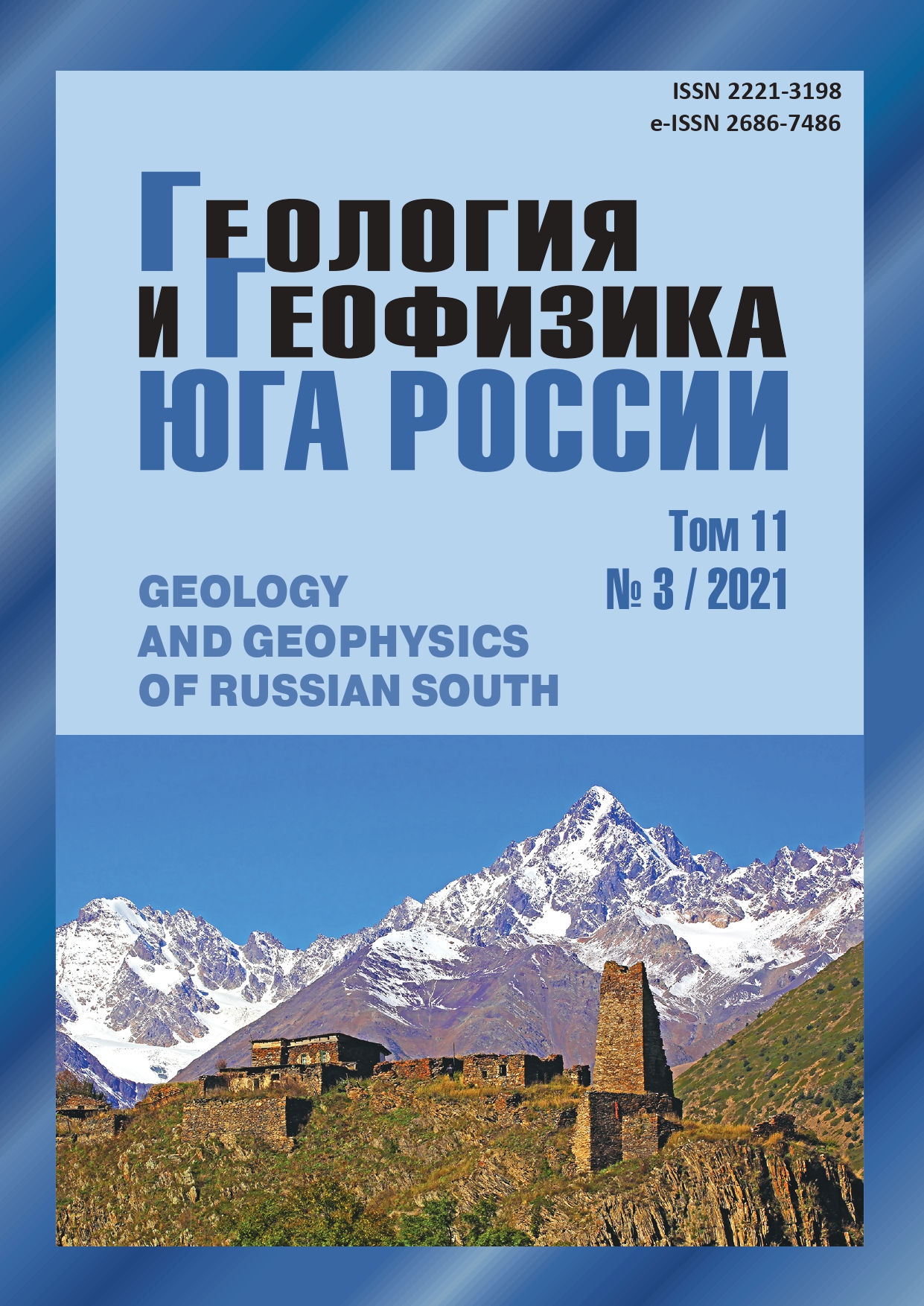Ore-magmatic systems of the copper-porphyry type of the Greater Caucasus
Abstract
The article is devoted to the identification of the features of the geological structure and mineralogy of the Tanadon-Sangutidon-Kazbek district of the manifestations of copper-porphyry mineralization in the Central part of the Greater Caucasus and the assessment of the correspondence of the geological conditions of mineralization to modern models of ore-magmatic systems of the copper-porphyry type. The relevance is determined by the need to develop a scientific and methodological basis for forecasting and searching for hidden mineralization. Aim. To identify the features of the geology and mineralogy of the Tanadon-Sangutidon-Kazbek ore region and to establish the correspondence of the mineralization conditions to modern models of ore-magmatic systems of the copper-porphyry type. Methods. Comparative geological and metallogenic analysis based on modern geoinformation technologies in the environment of the ArcGIS software package. Results. It is established that the ore-magmatic systems of the studied area correspond to the geological and structural position of copperporphyry deposits. The studied area unites a group of copper-porphyry ore-magmatic systems associated with small granitoid intrusions of the Teplinsky Pliocene-Pleistocene complex. There are also ore occurrences of tungsten, arsenic, gold, antimony, etc., which make up a single genetic series, in which copper-porphyry mineralization occupies a well – defined position-it is timed to the porphyry phase of the latest intrusive magmatism. The comparison of the conditions of the Late Cenozoic mineralization and its characteristics within the studied orebearing areas with the main elements of the typical model of the copper-porphyry system allows us to consider the Sangutidon, Teplinsky and Tanadon ore nodes as an expression of the parts of a single ore-magmatic system of the copper-porphyry type superstructuring each other vertically. The newest granite-granodiorite formation of the Greater Caucasus, which is productive for copper-porphyry mineralization, was formed under the conditions of a repeated-rhogenic regime of activation of the region and superimposed on its heterogeneous substrate. The latter within the studied area is characterized by a two-story structure and consists of the Lower-Middle Jurassic volcanogenic-sedimentary complex of the cover and the Pre – Jurassic base, in which the main role is played by the Precambrian-Lower-Middle Paleozoic metamorphic strata of the crystalline basement of the Greater Caucasus, broken by Paleozoic granitoids of the Main Ridge. The composition of Late Neogene granitoids depends on the composition of the substrate, both at the deep levels of its anatectic melting, and on the ascent paths of the magmas formed during this process. In this regard, the increased basicity of granitoids of the polyphase Teplinsky complex formed under hypabyssal and subvolcanic conditions is due to a higher degree of maficity of the substrate of the studied area, which includes a number of basaltoid or similar strata in composition, compared to neighboring blocks.


